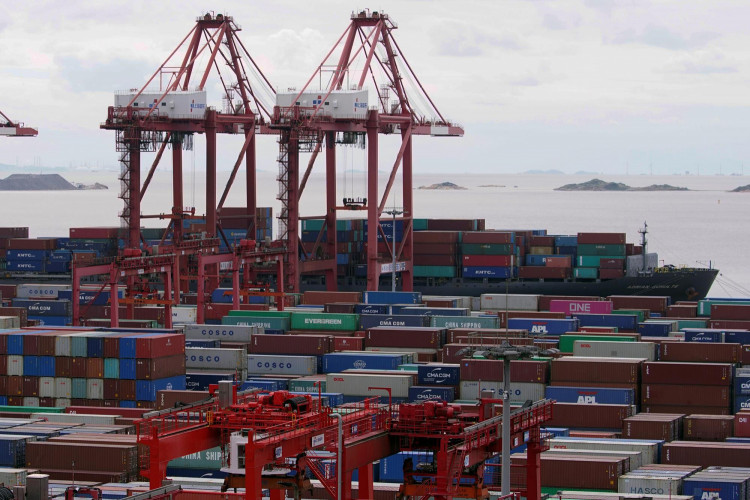China's export growth slowed sharply in September, raising new concerns about the outlook for the world's second-largest economy. According to data released by the Chinese customs office on Monday, exports rose just 2.4% year-on-year in U.S. dollar terms, a significant decline from the 8.7% increase reported in August. Imports grew by a mere 0.3%, reflecting weak domestic demand and adding to fears of a broader economic slowdown.
The sharp deceleration in export growth has been attributed to weakening global demand, compounded by trade tensions with key partners like the United States and Europe. Economists had expected stronger figures for September, with predictions that exports would rise around 6% and imports by 0.9%. Instead, the trade surplus narrowed to $81.7 billion in September, down from $91 billion in August.
"The slowdown in export growth is worrisome as it reflects a broader weakness in global demand, particularly as China is grappling with sluggish domestic consumption and ongoing challenges in its property sector," said Zhiwei Zhang, president and chief economist at Pinpoint Asset Management.
The U.S. and the European Union have recently imposed new tariffs on certain Chinese products, including electric vehicles, further dimming the prospects for China's trade. These measures, coupled with the global economic slowdown, pose serious challenges to China's ability to maintain export-driven growth.
"Growing trade barriers are likely to become an increasing constraint on China's export performance," noted Zichun Huang, China economist at Capital Economics, in a report on Monday. "With this engine of growth stalling, other areas of the economy, such as investment and consumption, will need to step up to meet growth targets."
China's leaders have been trying to revive the economy after the disruptions caused by the COVID-19 pandemic, which saw the country's growth slow significantly. In an effort to spark a recovery, policymakers in Beijing have announced several measures, including advancing 200 billion yuan ($28.2 billion) from next year's budget for spending on infrastructure and construction projects. However, the stimulus measures introduced so far have fallen short of what many analysts believe is necessary to reverse the downward trajectory.
"The Chinese government needs to introduce much larger fiscal support to effectively lift the economy," said Lan Foan, China's finance minister, in a statement over the weekend. "While these efforts are commendable, the scale of stimulus required is much larger."
Despite the grim outlook, there were some bright spots in China's trade data. Shipments of autos increased more than 20% year-on-year, helping to support export growth in the first nine months of the year. Overall, China's exports have risen by 4.3% year-to-date, buoyed in part by these gains. However, the broader trend remains one of deceleration, as highlighted by September's figures.
China's trade with key partners exhibited mixed results. Exports to the United States, its largest trading partner, increased by 2.2%, while imports from the U.S. jumped by 6.7%, according to official data. Trade with the Association of Southeast Asian Nations (ASEAN), China's largest regional trading partner, also saw modest growth, with exports rising 5.5% and imports climbing 4.2%. However, exports to the European Union, another key market, edged up only 1.3%, while imports fell 4%.
In contrast, exports to Russia surged by 16.6%, reflecting deepening ties between the two countries. Yet imports from Russia fell by 8.4%, raising questions about the sustainability of this trade dynamic.
China's import data painted a similarly mixed picture. While imports of natural gas and coal increased, reflecting the government's efforts to bolster energy security, crude oil imports dropped by 10.7%. Imports of rare earth minerals-a critical component in high-tech industries-also fell, with exports plunging by more than 40%.
Adding to the economic challenges, inflation data released on Sunday showed further weakness in domestic demand. The core consumer price index, which excludes volatile food and energy prices, rose by just 0.1% in September, the slowest pace since February 2021. Weak consumer spending and a slump in tourism-related activities during the Mid-Autumn Festival and Golden Week holidays have weighed on economic activity.






